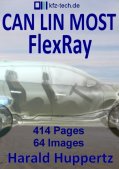|
|
|
||||||||
| |||||||||
|
|
A
B
C
D
E
F
G
H
I
J
K
L
M
N
O
P
Q
R
S
T
U
V
W
X
Y
Z
| ||||||||
| 3.5 million units produced until 2009. |
It is the time in which the East opens up and the European automotive industry searches requests on this market, albeit with rather outdated models. 1968 Fiat renews his relationship to Fabryka Samochodów Osobowych with the 125 Polski. After that the 126p is also built under license. From 1966, Fiat builds a car plant in Russian Stavropol-Volzhskii. The there reproduced Fiat 124 is later called also in the East 'Lada'.
The first Renault to be mounted in the converted factory in 1968, is in principle the Renault 8. But the planning comes down to the relatively modern Renault 12, the however, was not ready in time. Significant that Renault issued the license for the reproduction of relatively new vehicles. In this case even with front drive, while Fiat let build in principle outdated types like the 124/125, even with still older engines. It will remain that a Dacia indeed is more cost-efficient, but not necessarily technically outdated.
The German carmakers do not yet engage oneself at that time with such projects in the east. This is also due to political requirements. The steel producer Krupp has made painful experiences in connection with earlier USSR transactions because it gave him the official disregard of highest positions in Germany. The boss Berhold Beitz is accused of 'national unreliability'. However, thereby one also has freed up capacity. Thus for example the VW Group can develop itself as one of the earliest in China, from which it draws the benefits today.
With the start of production of the Dacia 1300 which comes at the same time with the Renault 12 on the market, the factory is more than busy. The car will a symbol of Romanian car construction. The average citizen has to wait a long time for it. About its durability are reported amazing things. The pride is noticeable to be able to keep up with in socialism more prestigious countries as the GDR and Czechoslovakia. However, there is also a Bulgarian version of the car.
Already during the production be made slightly modified equipment versions. Also the initiative to several facelifts starts from Pitesti. Creates are a station wagon (Break), several pickup versions with two and five seats in the passenger compartment. From 1973, the export to the West will possible, but keeps within a limit as with all Eastern vehicles. Additional versions of larger Renaults are built with limited equipment options for the political nomenklatura.
The various facelifts, which makes Renault on his model 12, be taken not without modifications by the Romanians. In the east, the car with four-stroke engine and front drive is superior to the local production. Either the drive is still classic front or back, but with two-stroke engine. This then also applies to the middle class Wartburg from East Germany. However, the export deteriorated dramatically with the opening of the Berlin Wall and the streams cheaper, used west cars.
Later, a sedan come with a large, slightly kinked tailgate (Supernova) and rear wing and a sporty coupe. 08/13
2001-2014 Copyright programs, texts, animations, pictures: H. Huppertz - Email
Translator: Don Leslie - Email: lesdon@t-online.de


 History
History